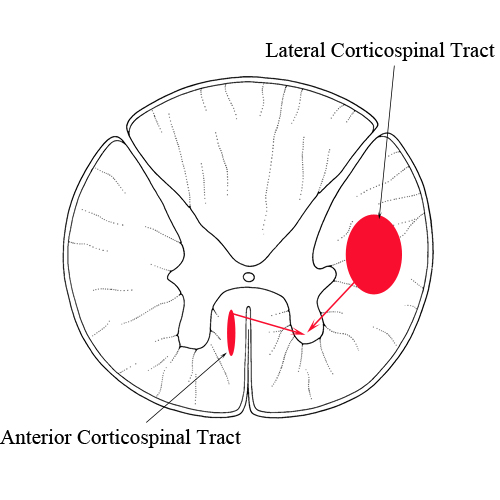Touch and Vibration. Information about light touch and vibration pass through the dorsal columns to reach the dorsal column nuclei on the same side of the medulla. Here there is a relay and the second order neurones cross over to the opposite side of the neuraxis in the medulla to reach the thalamus. This is sometimes called the 'sensory decussation'. |
Pain and Temperature. Information about injurious stimuli and temperature are relayed in the dorsal horn of the same side of the body. Within a few segments, the axons of these neurones then pass to the opposite (contralateral) lateral columns and project to the thalamus in the spinothalamic tract, which is the 'classical' pain pathway. Other ascending tracts carrying information about nociception pass rostrally in the antero-lateral system and other smaller pathways. |
Dorsal Columns The dorsal columns contain the axon collaterals of neurones that sense touch, and project rostrally to the dorsal column nuclei at the caudal end of the medulla. In lower segments of the cord the dorsal columns are thin, and these fibres remain in a medial position. Axons from higher segments of the cord are added to the lateral edge of the dorsal columns. In the cervical region there are two distinct components of the dorsal columns - the fasciculus gracilis (medial) and fasciculus cuneatus (lateral). In some segments the dorsal columns also contain proprioceptive afferents, e.g in the lower segments of the cord, where these afferents project to Clarke's Column. And in the cervical cord where they project to the accessory cuneate nucleus. Clarke's Column (Nucleus Proprius) exists in the ventral part of the dorsal horn and is the origin of the Spino-Cerebellar Tracts. |
 |
